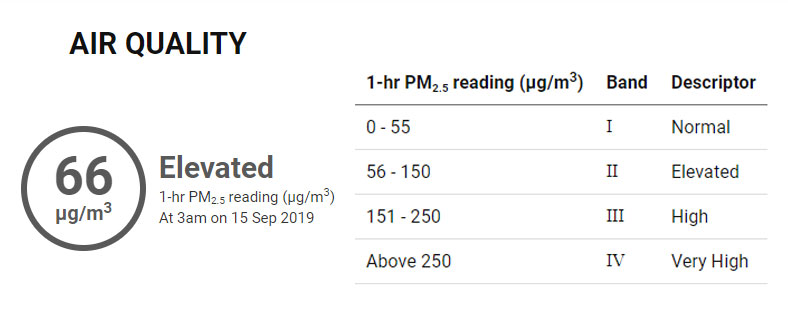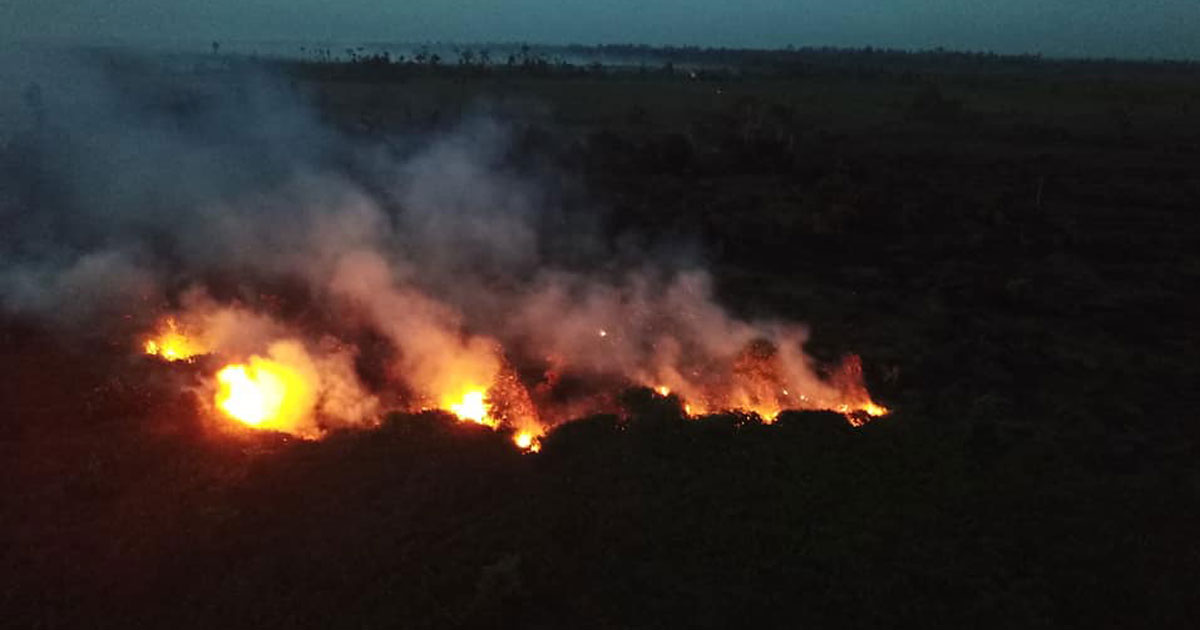The haze is back in Singapore and you have to decide how bad it is at any hour of any day.
Besides sticking your head out of the window and taking a whiff, here is one fact you should know that can determine if you want to stay outdoors for long.
Here's a summary of the rest of this article:
In general, as long as the 24-hour PSI forecast is in the “moderate” range, normal activities can be conducted.
But if you’re wondering if it is safe to go outdoors in the next few hours, you should refer to the one-hour PM2.5 concentration readings instead.

Singapore incorporated PM2.5 into the PSI readings in 2014 to give a more accurate gauge of air quality standards -- a move that was lauded by respiratory experts.
Rest of article
1-hour PM2.5 reading is key
The National Environment Agency (NEA) states that the one-hour PM2.5 is a “good indicator of current air quality”.
During haze periods, PM2.5 is the key pollutant that is factored into the PSI.
The PM2.5 range reading is sufficient for most people to understand the health implications and short-term fluctuations in PM2.5 concentrations through the day during haze periods, based on local conditions.
What about PSI?
The PSI takes into account tiny air particles known as PM2.5, the main pollutant during haze.
On the other hand, PM2.5 refers to particulate matter that is up to 2.5 micrometres, or microns, in size.
These particles are among the potentially most harmful to human health.
PSI also takes into account other types of pollutants.
Why does Singapore rely on PSI and PM2.5?
It works in Singapore's context and is stringent enough.
There are no international guidelines on how air quality indices ought to be computed.
Different countries end up adopting different systems.
What is World Air Quality Index website (aqicn.org)?
The World Air Quality Index website (aqicn.org) is a website that was set up as a non-profit enterprise with support from a range of government agencies worldwide.
It provides AQI readings, which are different from Singapore's PSI and PM2.5 readings.
Singapore’s AQI is typically higher than PSI.
But the aqicn.org website computes its AQI using the United States Environmental Protection Agency's reporting system, which does not follow Singapore’s system of computing PSI.
Singapore's PSI and PM2.5 readings are not comparable with AQI.
In addition, aqicn.org relies on the 24-hour average of PM2.5 concentration data, while NEA posts this data every hour instead.
In other words, NEA is more detailed.
The PSI on NEA’s website is calculated based on six pollutants
- fine particulate matter (PM2.5),
- particulate matter (PM10),
- sulphur dioxide (SO2),
- carbon monoxide (CO),
- ozone (O3) and
- nitrogen dioxide (NO2).
If you like what you read, follow us on Facebook, Instagram, Twitter and Telegram to get the latest updates.
